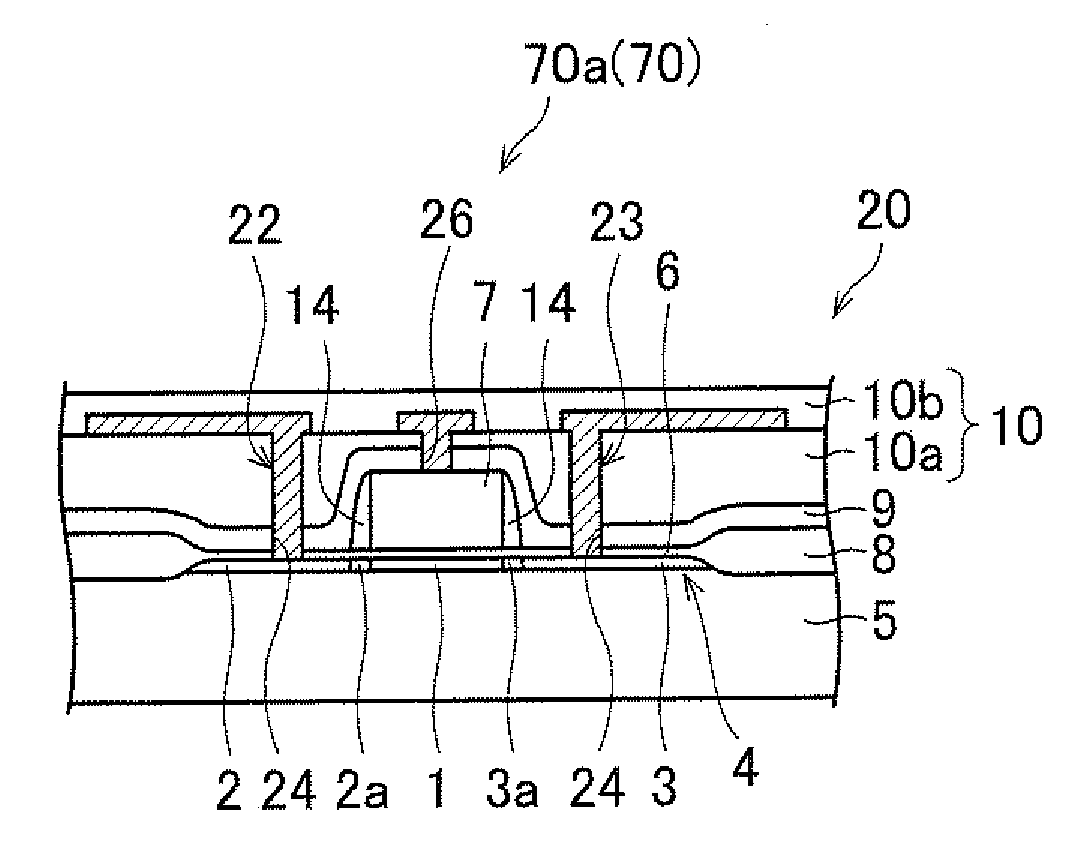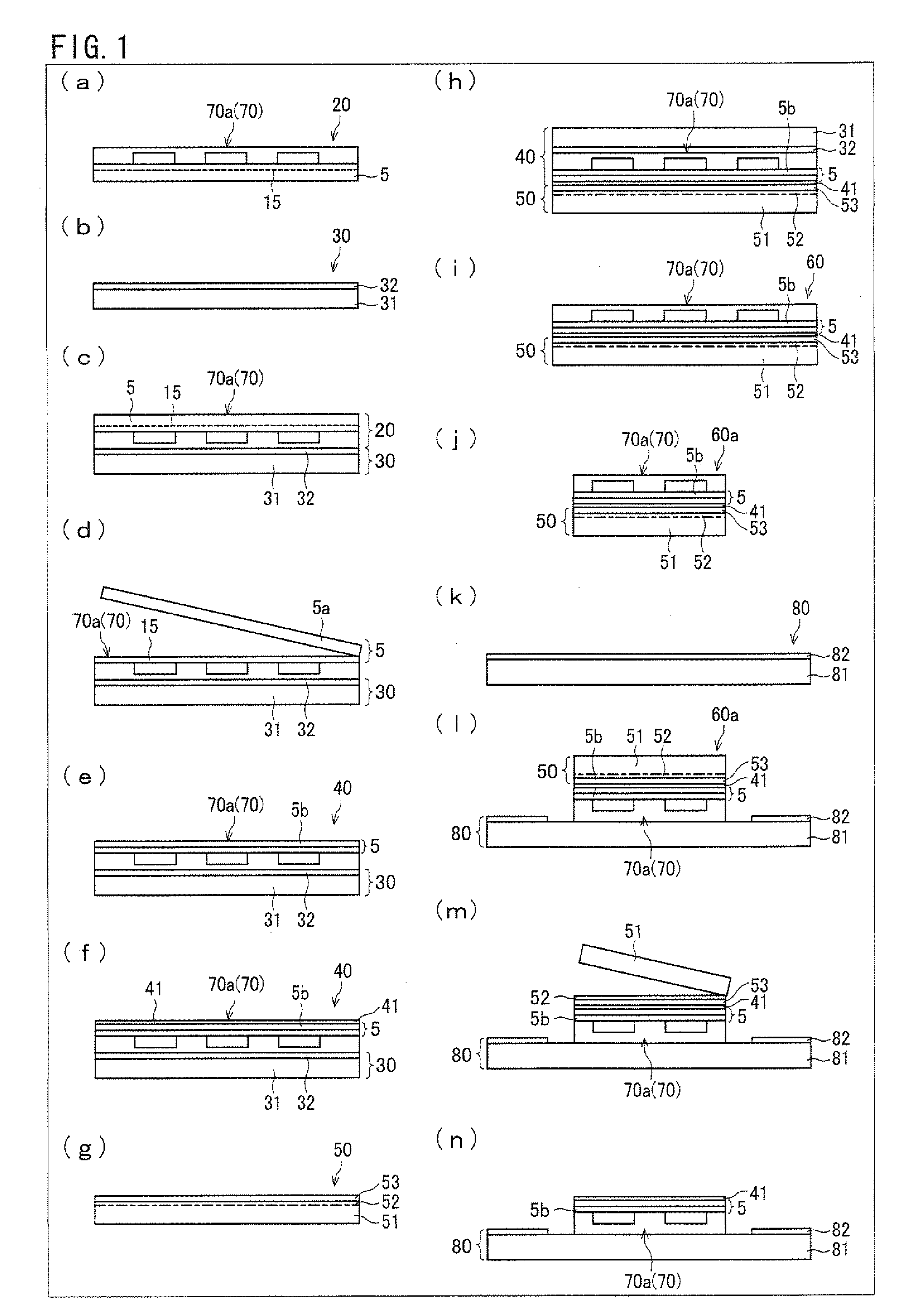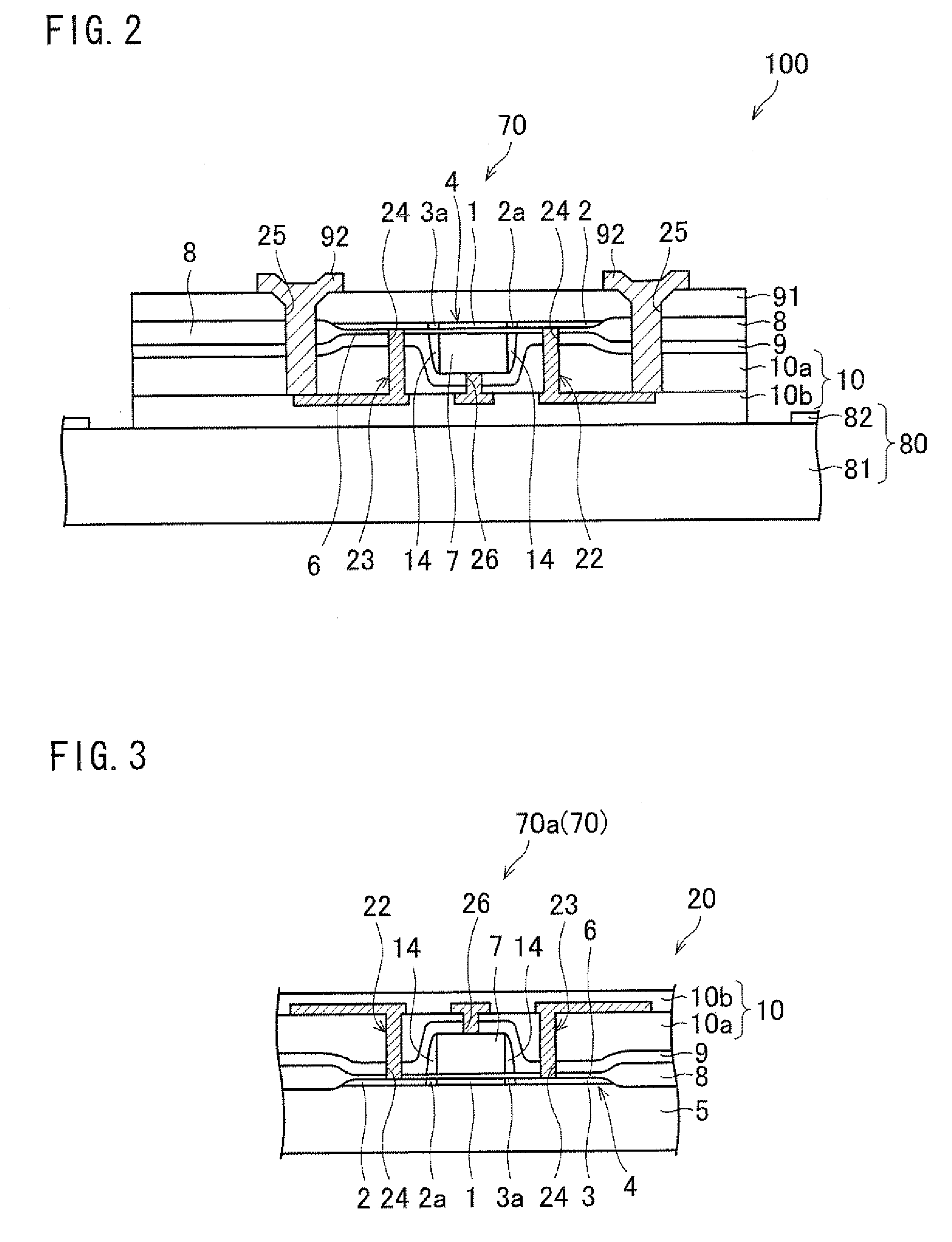Method for Transferring Semiconductor Element, Method for Manufacturing Semiconductor Device, and Semiconductor Device
- Summary
- Abstract
- Description
- Claims
- Application Information
AI Technical Summary
Benefits of technology
Problems solved by technology
Method used
Image
Examples
Embodiment Construction
[0082]An embodiment of the present invention is described below with reference to (a) to (n) of FIG. 1 and FIG. 6.
[0083]A semiconductor device of the present invention is a semiconductor device utilizing an insulating substrate having a low heat resistance as a substrate onto which a semiconductor element such as a semiconductor transistor is finally transferred (moved), namely, as a substrate which is finally used for, for example, a display apparatus and is a so-called production substrate. The insulating substrate is a substrate such as a glass substrate and has been conventionally difficult to apply.
[0084]In the present embodiment, described below as an example of the semiconductor device of the present embodiment is a semiconductor device having a structure in which a chip-type semiconductor transistor, which is the semiconductor element above, has been transferred onto a substrate formed (TFT substrate) on which a pixel area has been formed. However, the present invention is n...
PUM
 Login to View More
Login to View More Abstract
Description
Claims
Application Information
 Login to View More
Login to View More - R&D
- Intellectual Property
- Life Sciences
- Materials
- Tech Scout
- Unparalleled Data Quality
- Higher Quality Content
- 60% Fewer Hallucinations
Browse by: Latest US Patents, China's latest patents, Technical Efficacy Thesaurus, Application Domain, Technology Topic, Popular Technical Reports.
© 2025 PatSnap. All rights reserved.Legal|Privacy policy|Modern Slavery Act Transparency Statement|Sitemap|About US| Contact US: help@patsnap.com



